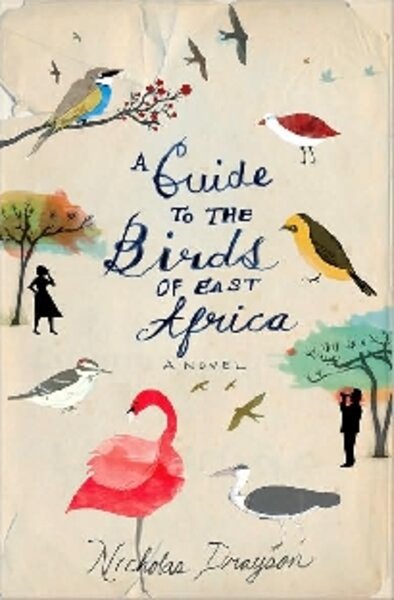A Guide to the Birds of East Africa
Loading...
In the natural world, courtship rituals can be both dangerous and painful – and lead to big headaches for the male of the species. (Just ask a black widow spider or a big-horned sheep.)
It’s not that much easier for homo sapiens, as naturalist and author Nicholas Drayson shows by closely observing the courtship of one Mr. Malik, a small, round Nairobi businessman with a classic comb-over, in his quietly beguiling new novel, A Guide to the Birds of East Africa.
For three years, Mr. Malik, an avid birder, has had a silent crush on Rose Mbikwa, the leader of the Tuesday Morning Bird Walk. Just when he’s worked up the courage to ask the Scottish widow to the annual Hunt Club Ball, who should appear but his old schoolmate, Harry Khan.
If the men were birds, the eye-catching Khan would be a peacock or flamingo, whereas Mr. Malik, as the novel’s character guide helpfully points out, is what birders would call “a small, brown job.”
Khan has been Mr. Malik’s nemesis since they were high-school roommates in England. (On their first morning, when Malik asked to borrow some toothpaste, he ended up brushing his teeth with Khan’s antifungal ointment. Things went downhill from there.)
Naturally, Khan also wants to take Rose to the Hunt Club Ball. Unable to agree who should get to ask her out first, the men settle on a wager: Whoever can spot the most different species of birds in a week wins.
The wealthy Khan, who knows nothing about birds, enlists the aid of two Australian ecotourists and charters planes to exotic locales such as Mount Kenya and Victoria Falls. Mr. Malik’s campaign is more haphazard and disaster-ridden, plagued by everything from armed robbers (who steal his car and his precious birding notebook) to Somali raiders.
Comparisons with Alexander McCall Smith’s “No 1. Ladies Detective Agency” seem inevitable. (The author photo even features Drayson wearing a similar hat to McCall Smith. Drayson, however, goes one better: He’s photographed cuddling a chicken.)
Less bush tea and an archer tone
Not only is not a single cup of bush tea consumed, but Drayson’s tone is more arch than McCall Smith’s warmly generous musings about Botswana, and features pointed commentary about both domestic and international politics.
“There is a distressing but not uncommon condition of presidents and other world leaders known as Worrying About Africa,” our narrator explains. “It is usually picked up overseas at a summit meeting on world poverty or disease and symptoms include painful twinges of guilt ... uncomfortable feelings somewhere below the stomach that perhaps unfettered capitalism is not the benevolent force for good we are constantly assured it is, and frequent attacks of calling for Something to Be Done. The best remedy is invariably a stiff dose of domestic crisis.”
At its best, “A Guide to the Birds of East Africa” reads like transplanted Wodehouse. There’s even a Drones Club, here called the Asadi Club, where members of Kenya’s Indian community devote themselves to eating chili popcorn and making absurd wagers.
Then Drayson devotes an entire chapter to a tired bet involving flatulence, and the resemblance fades somewhat. (Where’s a “Great Sermon Handicap” when you need one?)
Happily, that chapter comes early on, and once Drayson and characters finish snickering, the novel quickly picks up enough speed and altitude to stay airborne.
The bet gives Drayson an opportunity to talk about the glories of Kenya’s 1,000 different bird species in terms that will have twitchers reaching for plane tickets and binoculars.
For example, here’s Drayson on the hoopoe: “...the first time I saw one in Africa I had much the same feeling as Mr. Malik was having now. It was one of happy elation. There is something about the shape of the bird, with its long curved beak and clown’s crest, and the color of the bird, with its bright russet plumage speckled with bands of black and white – there is even something about the very name of the bird – that just cheers you up. Forget the bluebird of happiness, give me a hoopoe every time.”
The charms of an honorable suitor
Much as the jackdaw used its wits to win the birds’ beauty contest in Aesop’s fables, Mr. Malik’s unflinching sense of honor, which he takes to exasperating lengths, and anonymous activism quietly and gradually charm a reader.
Whether they’re enough to win the hand of Rose is another matter, but nobody short of Cinderella ever worked harder to get to a ball.
Yvonne Zipp regularly reviews fiction for the Monitor.






